Passive Solar Shop
Use seasonal sun angles to lower your heating and air-conditioning costs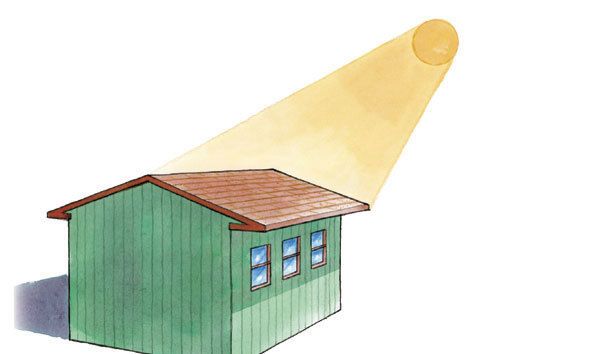
After 25 years in a cramped, one-car garage workspace, the time finally arrived to construct a shop with some real elbow room. In addition to all the usual design considerations—work flow, machine locations, electrical-outlet placement, dust collection, and the like—I wanted to incorporate passive solar heating. Using energy from the sun to heat the shop offers two advantages. First, heating costs go down, no small advantage at a time when energy prices have soared. And second, it reduces—even if in a small way—our national dependence on oil.
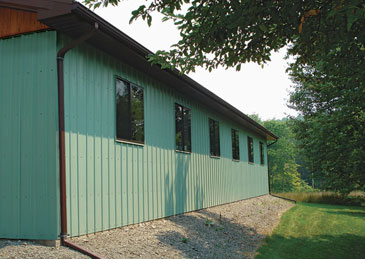
Window size and placement are important
When designing a shop to take advantage of the sun’s energy, the size of the windows is an important part of the story. In winter, you want windows to let in lots of warming sunshine. In summer, you want those same windows in the shade. Before you can size and position the windows, you need to figure out where the shadow lines fall. To do that, here’s a quick refresher in high-school science.
Sun 101—In the northern hemisphere, the sun arcs across the southern sky as it travels from sunrise to sunset. Viewed from the earth, the distance between the horizon and the sun, measured in degrees, is commonly called the angle of the sun. The sun reaches its highest angle at midday—halfway between sunrise and sunset. In the winter, the sun angle is low. Come summer, the angle is much higher. Indeed, at midday in mid-June, the sun is almost directly overhead.
For me, that meant making sure one of the long walls of my planned 34-ft. by 64-ft. shop would face due south, where the sun always lives. Then it was necessary to determine where shadows would fall on the shop wall during the two seasons of temperature extremes—winter and summer.
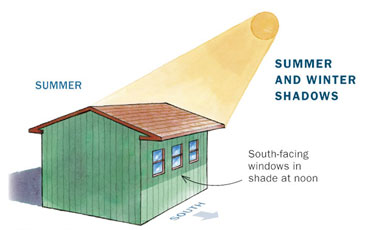
In the summer, with the midday sun high in the sky, the south-facing windows are completely in shade.
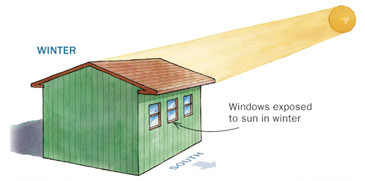
Come winter, the sun is low in the sky, and the shop windows let in a full measure of warming sunshine.
Story stick measures angle of sun—Relatively inexpensive architectural design programs (SketchUp is a great one, and free at google.com) let you determine sun angles for any day, time, and latitude. If you know how to use one or are willing to learn, it is a good way to get the shadow information. But as a hands-on type who’d rather stay away from unfamiliar computer programs, I used a simple, low-tech method to obtain the solar angles and shadow lines needed to locate the windows. A kind of story stick allowed me to stand outside in the sun and measure the shadow-casting effect of various roof overhangs.
The stick is made from two 2x4s, a 10-footer to represent the upper portion of my shop wall, and a 4-footer that is clamped at a right angle to the longer piece to duplicate the various roof overhangs. My roof overhang is at an elevation of 10 ft.
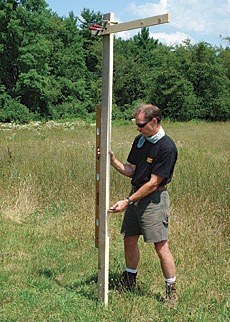
The story stick. Chant taking measurements on June 21, when the sun was at its highest midday point of the year.
The story-stick system requires two shadow readings, six months apart. One reading is made around June 21, the day that the sun reaches its highest point in the midday sky. The second reading is made around December 22, when the midday sun is at its lowest point in the sky. The plans called for the bottom of the windows to be about 5 ft. from the ceiling, allowing wall space for floor cabinets.
At about noon on June 21, with the bottom end of the pole resting on the ground, I pointed the extension at the sun. At the same time, I held a level against the stick to help keep it plumb. I noted where the extension cast a shadow on the pole. After some trial and error, I had the overhang extending 28 in., just far enough to place the shadow line at the 5-ft. mark.
Six months later, I repeated the reading with the 28-in. extension. This time, of course, the shadow line was higher on the pole, about 1 ft. from the roof overhang.
Now I had all the data needed to determine the window height. A 4-ft.-tall window installed 1 ft. from the ceiling would have its bottom end 5 ft. below the extension. At midday, it would be in full sun in the winter and full shade in the summer.
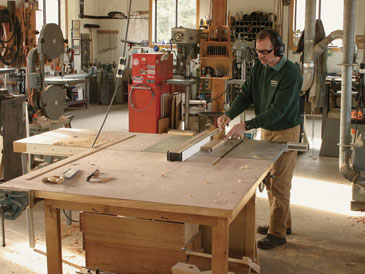
Winter sun is a welcome visitor. Sunlight and the free heat that comes with it bathe Chant’s shop in early January.
Insulation is important, and trees help, too
No matter how carefully you’ve placed the windows, a poorly insulated shop won’t hold heat for long in winter.
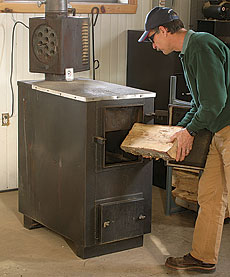
Heat for cloudy days. On days when the sun doesn’t shine, a woodstove keeps the shop at a comfortable temperature.
In summer, that shop will absorb outside heat and transfer it inside. So make sure the walls, ceiling, doors, and windows are well insulated.
Also, I planted deciduous trees along the east, south, and west sides. In summer, their leaves help shade the shop. In winter, their bare branches allow warm sunlight in. If there is room on the property, consider a row of evergreens on the north side. In many areas, the prevailing winter winds come from the north. Evergreens located there won’t shade the shop, but their year-round needles will catch the cold blast.
From Fine Woodworking #195
Photos: Steven Chant and Tom Begnal; drawings: Stephen Hutchings
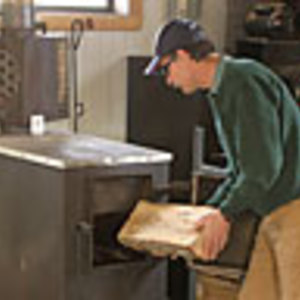


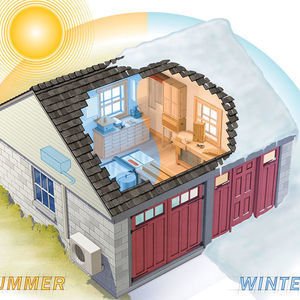

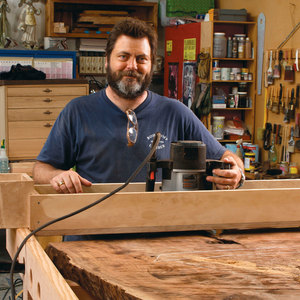






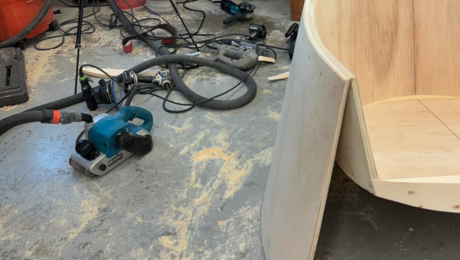
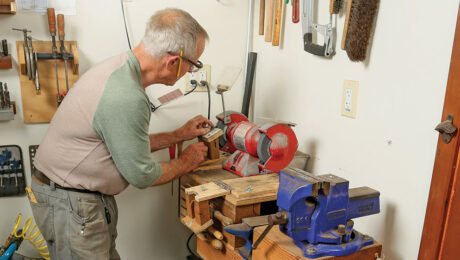








Log in or create an account to post a comment.
Sign up Log in